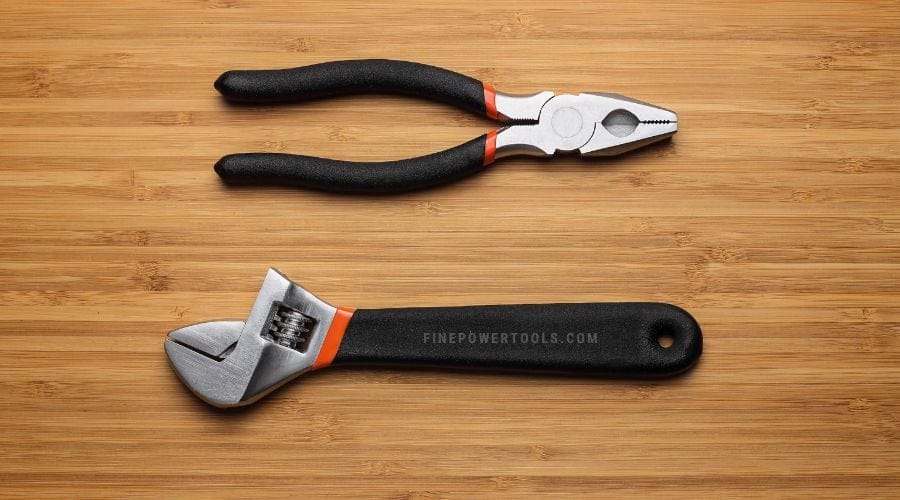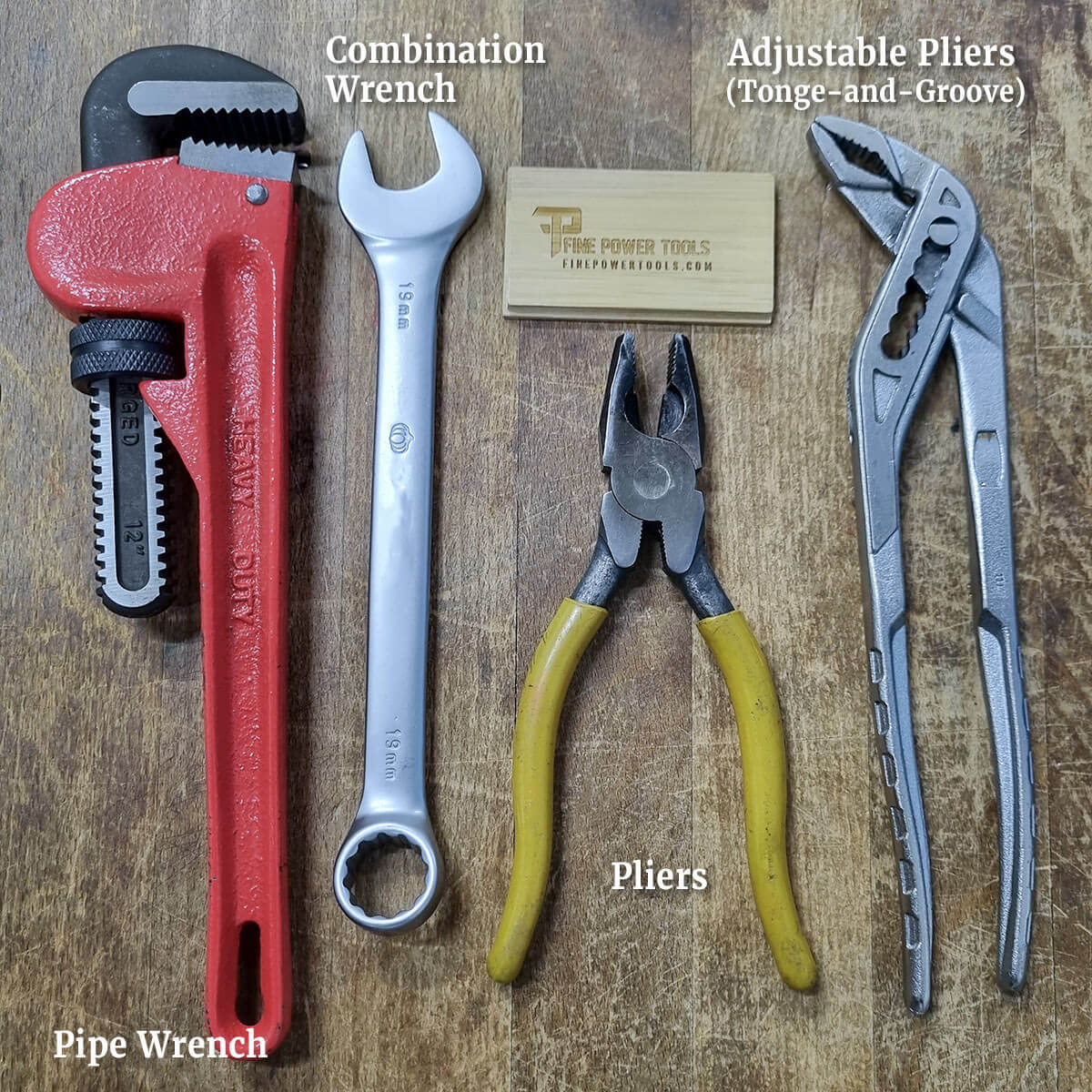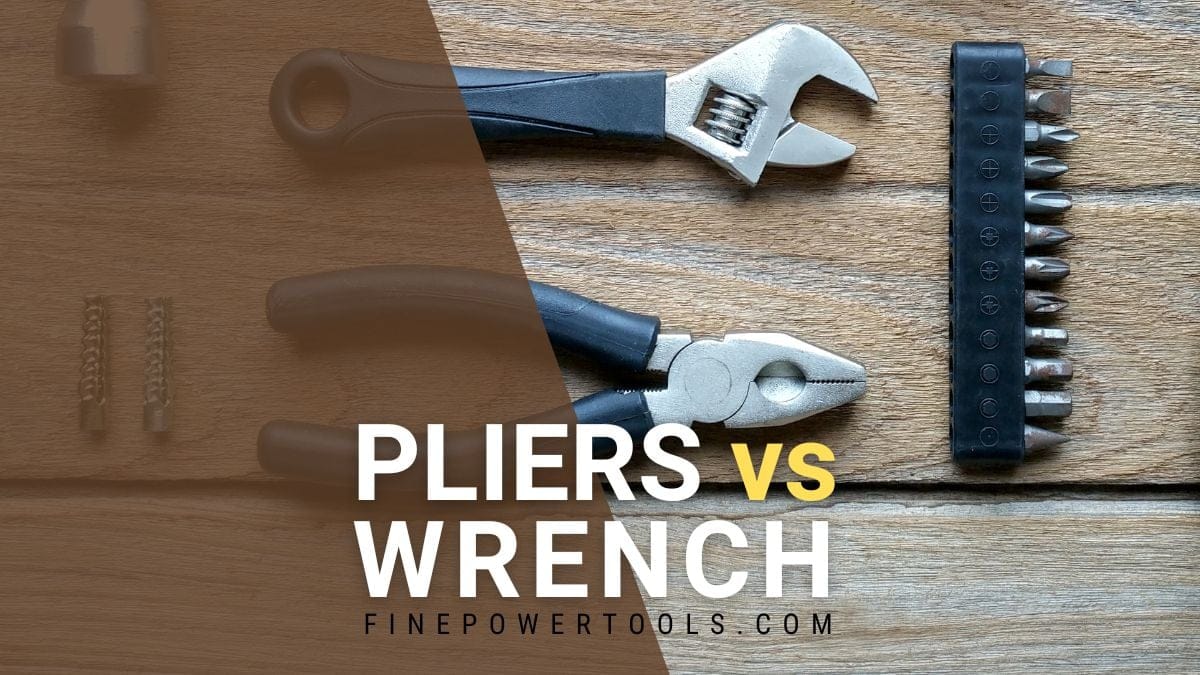There are similarities between wrenches and pliers, but there are also significant differences as well. Both tools are essential in any toolbox, and understanding their distinct functions will help you choose the right tool.
While there are a few cases in which either pliers or wrenches will work, most of the time, you will need to select either one or the other based on the specific task at hand.

What follows are the main differences between pliers and wrenches, along with guidance on which one you should use and when.
Differences between Wrenches and Pliers
The primary purpose of a wrench is to apply torque onto a fastener to loosen or tighten it. Pliers are used for gripping and holding objects, cutting, bending, twisting wires, etc.
Difference in Design
Design wise, the most visible difference between pliers and wrenches is the pivot joint found on pliers. The pivot joint in pliers acts as a fulcrum point, allowing you to adjust the distance between the jaws for a wider range of motion and to grip objects of various sizes. Wrenches usually have no pivot point.

Function
The main difference between wrenches and pliers is their function. You use a wrench to tighten or loosen fasteners such as screws, bolts, and nuts. The turning of the wrench is in a circular motion.
You use pliers to grip and twist objects. This normally means objects that are not fasteners but may have different shapes, such as wiring.
Size and Shape
Wrenches are designed to fit specific sizes of nuts, bolts, and other fasteners. They come in two main types: fixed-size wrenches, which are made to fit a specific size of fastener, and adjustable wrenches, which use a screw mechanism to adapt to various sizes.
For instance, a ½” box wrench is designed to fit precisely over the head of a bolt or a nut that is also designated as ½”, which refers to the size across the flats of the bolt head or nut, not the diameter of the bolt’s threaded part.
Most pliers would fit various shapes and sizes. They can grip, squeeze, and rotate diverse types and sizes of objects. The object can be anything that fits between its jaws securely. However, wiring is the most common type of object for pliers to take hold.
Using Pliers instead of a Wrench
If the object is not a fastener that needs loosening or tightening, then chances are you should use pliers. To put it more simply, pliers hold and twist objects while wrenches turn fasteners.
If you need to hold an object in place, twist wires together, or turn items that are not fasteners, use pliers.
It is the versatility of pliers that brings the mistaken assumption that they can take the place of wrenches.
Why You Shouldn’t Use a Plier?
While you can use pliers to tighten or loosen a bolt, the issue with pliers is that their serrated jaws can damage the fastener. Since the pliers’ jaws are not parallel and their profile does not match the fastener shape perfectly, they tend to slip.
The result is that the fastener may be stripped or the corners rounded so that it cannot be properly gripped by a wrench.
Situations Where Pliers Can Substitute Wrenches
While pliers and wrenches each have their specialized applications, there are certain scenarios where their functions may overlap.
For example, both pipe wrenches and tongue-and-groove pliers can be used to grip and rotate pipes, although each tool may be more suitable for different types or sizes of pipes.
But such cases are exceptions rather than the rule.
Conclusion
Generally, pliers are more adept at gripping, bending, or cutting, while wrenches are specifically designed for the precise fit and torque application needed for tightening or loosening fasteners.
For around the house, having an adjustable wrench and a pair of pliers means you can tackle a wide variety of tasks. Just be sure to prioritize safety when using these tools, and maintain them well for long-lasting reliability.
